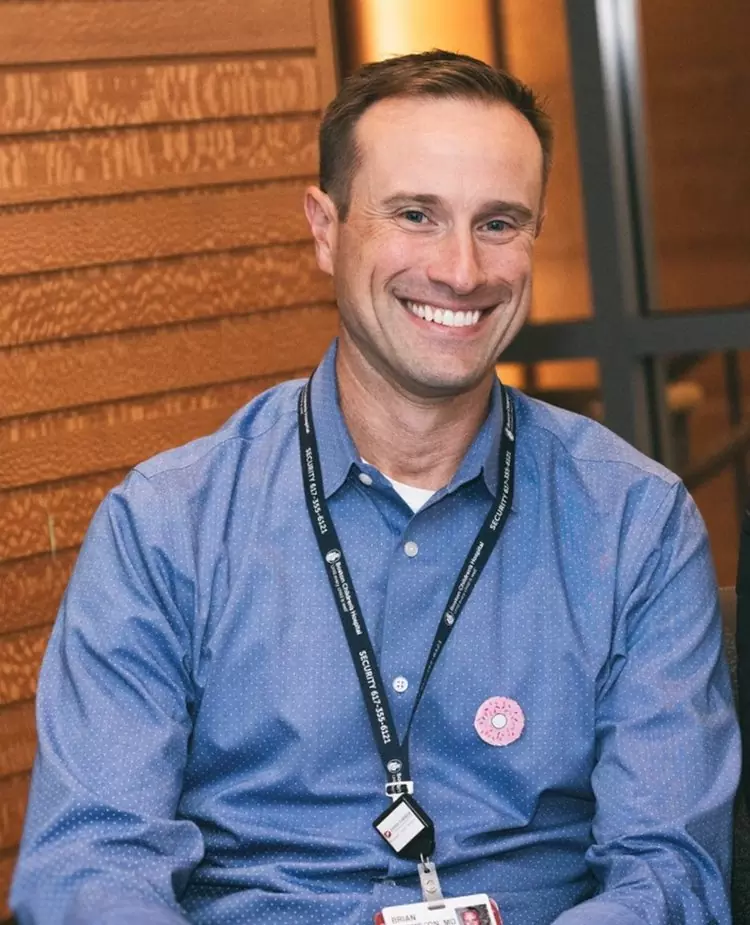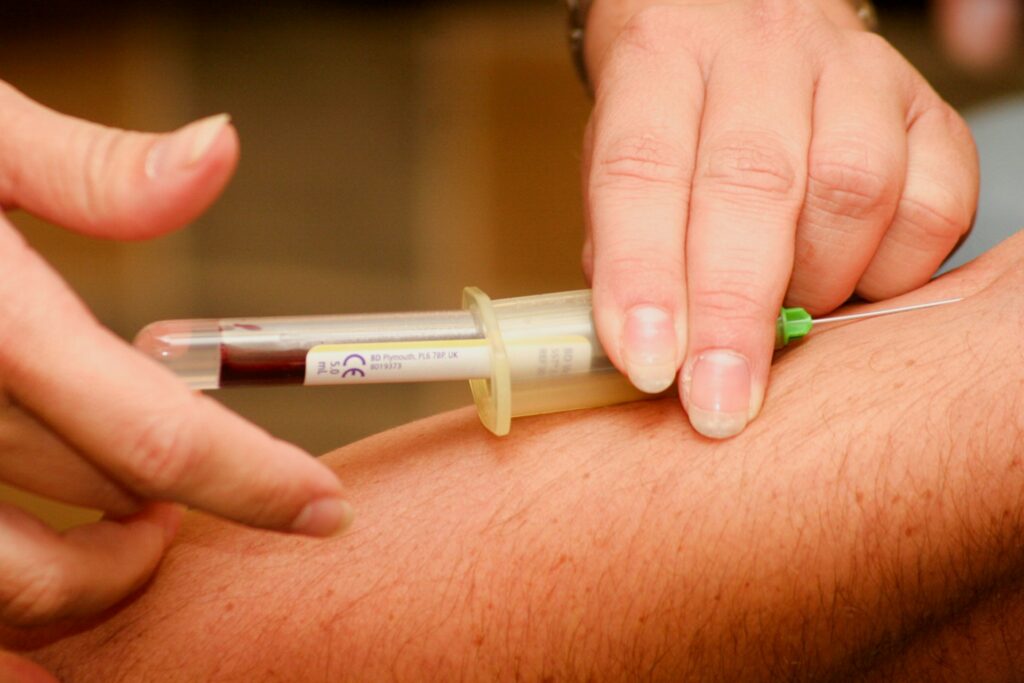By Bill Thomas | August 5th
Pediatric cancer research is a continuously evolving process. It never really “ends” because every breakthrough opens up new branches of possibility, inquiry, and discovery. Every data point, hypothesis, experiment, and trial builds on what came before it. The more we learn, the better equipped we are to continue learning.
Although there is no “end” to this process, there does eventually come a point when the amount of knowledge we’ve accumulated through a specific avenue of research allows us to turn the page and begin a whole new chapter. Dr. Brian Crompton, a physician-scientist at Boston’s Dana-Farber Cancer Institute, has spent years developing a new approach for detecting and profiling circulating tumor DNA (ctDNA) using liquid biopsy samples.
For Dr. Crompton, the next chapter starts with BrightSeq.

BrightSeq–or Boston Research in Innovative Genomics for Hematologic and Tumor Sequencing–is a collaborative research and testing initiative recently announced by the Dana-Farber Cancer Institute, Boston Children’s Hospital, and Broad Clinical Labs. The BrightSeq initiative is built atop Dr. Crompton’s pioneering research which, with the help of funding from Pediatric Cancer Research Foundation, proved that ctDNA (small fragments of tumor DNA that circulate in the peripheral blood) can be used as a biomarker for Ewing sarcoma and other pediatric solid tumors.
With Dr. Crompton’s research serving as its foundation, BrightSeq exists to design, validate, and implement a suite of novel clinical diagnostic and prognostic assays specifically tailored to rare pediatric cancers.
“A lot of the work that has been done in the liquid biopsy space before now has been to identify ctDNA in patients with adult cancers. Those assays can’t really detect ctDNA in children with pediatric tumors because the tumor types are totally different,” Dr. Crompton explains.
“Liquid biopsies are already commonly used for the management of patients with adult cancers. I think in the next ten years it’s going to become routine for doctors to use liquid biopsies to make decisions regarding pediatric cancers as well.”
How Liquid Biopsies Are Changing Pediatric Cancer Treatment
There are numerous reasons why liquid biopsies have emerged as one of the most promising new tools in the detection, diagnosis, and treatment of childhood cancer. In contrast to invasive tissue biopsies, which require either surgery or the insertion of an endoscope or needle in order for doctors to acquire a sample of the patient’s tumor, liquid biopsies require nothing more invasive than a standard blood draw.
Liquid biopsies are thus much quicker and simpler and cause considerably less pain, stress, and discomfort for the patient. Additionally, liquid biopsies offer a safer alternative to tissue biopsies when it comes to examining hard-to-reach tumors, such as those that affect the brain, lungs, or pancreas.
Through BrightSeq, Dr. Crompton’s findings are already changing the way pediatric oncologists look at liquid biopsies. Their full potential isn’t limited to diagnostics either.

“I think there are a lot of promising applications for liquid biopsies. For example, there are patients with cancer predisposition syndromes, children who are at high risk of developing cancers during their lifetime. Liquid biopsies could help us with early detection; a patient shouldn’t have any ctDNA in your blood if they don’t have cancer, so if we find it that early we might be able to improve outcomes for patients,” Dr. Crompton says.
“We could also potentially use liquid biopsies to detect cancer recurrence early. In most cases, we only know a patient has had a recurrence when their tumor has gotten big enough for it to cause a symptom or show up on imaging. With a liquid biopsy, we may be able to detect it before it gets to that point, which means we could potentially cure patients after relapse, which is very rare when it comes to pediatric solid tumors.”
While Dr. Crompton is quick to point out that these and other potential applications for liquid biopsies will require further research, he is especially keen to see the technique employed in risk stratification. Being able to measure the amount of ctDNA present at the time of diagnosis could help doctors identify patients who have a higher likelihood of being cured by chemotherapy or other standard treatments versus those who might benefit from more experimental therapies.
“We’ve never had really good biomarkers for most pediatric solid tumors before this. We just knew that some patients were cured and some were not. So, over the last 30-40 years, we just kept intensifying therapy for everyone,” Dr. Crompton explains. “Using ctDNA as a biomarker could help us determine how likely a patient is to be cured with a specific treatment, which would enable us to subject them to less intense levels of therapy while still curing them.”
Why We Believe it’s Important to Support Emerging Investigators
The formation of BrightSeq is the culmination of more than a decade of research and development. Dr. Crompton received his first grant from Pediatric Cancer Research Foundation all the way back in 2014, and we’ve been supportive of his work ever since.
“When I started my lab, I thought that the genomic and liquid biopsy work we’re currently discussing would account for maybe 10-15% of our research. PCRF helped us get started and now it’s 100% of what we do, and I think we’re making an impact across a wide swath of pediatric cancers,” Dr. Crompton says.

The impact that Dr. Crompton’s research has made and continues to make stands as a shining example of why we here at PCRF remain committed to powering cutting-edge research especially from emerging investigators. It’s no secret that the United States healthcare industry is facing a significant workforce shortage, with pediatric oncologists and researchers in particularly short supply. Fostering the next generation of pediatric cancer specialists is crucial not just for ensuring that there even is a next generation, but also because emerging investigators are our best resource for that most essential and invaluable asset: fresh perspective.
Pediatric cancer research is a continuously evolving process, that much is true. But evolution requires innovation. New blood brings with it new ideas. Today’s game-changing breakthroughs are the result of many, many years of meticulous planning, refinement, and discovery. Tomorrow’s game-changing breakthroughs could come from anywhere. They just need the support of those capable of recognizing their future potential.
“We never would have been able to prove ctDNA’s utility as a biomarker for pediatric solid tumors if we hadn’t first proven it in Ewing sarcoma, and we never would have been able to do that without the support of Pediatric Cancer Research Foundation,” Dr. Crompton says.
“When PCRF first funded this research, liquid biopsies were still a very new and uncertain thing. There were so many questions: Is this really going to work? Is it really feasible? But PCRF funded us and, because of that, we were able to show that, yes, it does work. This is going to change everything.”
If you would like to help us continue supporting pediatric cancer research and care, please consider becoming a donor. To stay up-to-date with all the latest news shaping the future of pediatric cancer treatment, don’t forget to follow Pediatric Cancer Research Foundation’s Profectus Blog!

